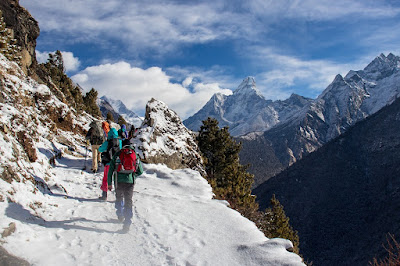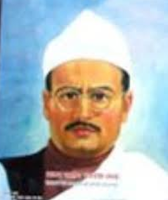Introduction to Nepal
Nepal; is a small and beautiful country located at southern Asia. It It is a small stone between two yams; means :it is a small landlocked country between two larger countries; India and China. It has the area of 1,48,181 sq.km. By the census, "2011," it has the population of 2,64,94,504. The.The population density of urban areas are higher than rural areas in Nepal. It's capital is Kathmandu which is more developed among all. It contains all the types of facilities due to which, the population density is higher.
Nepal is a multilingual, multicultural, multicultural, multiethnic country. Nepal has it's own and unique type of cultures and traditions. The cultures and traditions of Nepal differ from one place to another.though all the people are from different religions and cultures they have the feelings of unity in diversity.There are 125 castes and 123 languages spoken in Nepal.Most of the people follows hindu religion but also respect others religions which is the identity of nepal .

Nepal has unique flag all over the world.It is only the one flag all over the world which is not in rectangular shape .It contains moon and sun inside it.It contains three colours;Crimson Red,Blue and White.Blue colour is used in bordering the flag which is also the colour of peace and harmony ,Crimson Red is used inside the flag which also indicate the rhododendron which is national flower of Nepal and white is used in moon and sun.
Nepal is divided into 7 federal states and 77 districts on 20 September , 2015 according to the 4th schedule of the constitution of Nepal.Nepal has 3 sub-regions ; Himalayan,Hilly and Terai.Himalayan region covers 15% , whereas Hilly region covers 68% and Terai region covers 17% of the total land of Nepal.Himalayan region has very cold climate , similarly hilly region has moderate type of climate and terai region has hot and humid type og climate.Due to the climatic condition Himalayan region contains least population density whereas hilly and terai region contains high population density and also due to the rapid development.
There are many beautiful mountains in Nepal which are the highest peak of the world.Mt.Everest is the highest peak of the world ranking on 1st position which is located in Nepal.There are other 7 mountains which lies on the highest mountains of the world.It have been adding beuty to our country.Many tourists come to climb the mountains of our country which is helping in the economic growth of the country.
There are many types of festival which are celebrated in Nepal every year; Dashain, Tihar , Teej, Holi, Lhosar, Maghesankrati, Eid, Christmas, Chhat, Shree Panchami, Udhauli\Ubhauli, etc. are some of the festivals celebrated in Nepal.All the people celebrates each other's festival without any hesitation.Dashain is the main festival of Nepal. It is celebrated by all the people in Nepal.People plays swing and put tika and jamara during dashain festival.
Nepal has many fast flowing rivers which are capable of producing high amount of electricity.There are about 6000 rivers and rivulets in Nepal due to which it lies in one of the richest country in water resources.The major rivers are Karnali,Koshi,Trishuli,Bheri,Sheti,Rapti,etc.


































